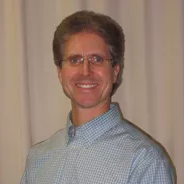For Your Safety - Screening, masks, and sanitation will continue to be implemented at our facility. Please see our blog post for more information.
While thinking that age is just a number is a great outlook on life, as time goes on, every person experiences inevitable age-related changes. Muscle loss, also known as sarcopenia, happens naturally as you age. After the age of 30, you actually lose about 3-5% of your muscle mass each decade — unless you work at it!
So, why does this happen? What does the research say? And most importantly, what can you do to combat this natural part of aging?
Why Does Muscle Loss Happen?
Many inactive individuals will notice they lose tone and muscle as time goes on. This is due to an imbalance between two neurological processes that drive muscle growth and deter it. For cell growth, your nervous system uses anabolic signals. Yet, for cell teardown, your body uses catabolic signals.
Basically, muscle loss happens when there are more catabolic signals than anabolic signals.
In part, this is caused by a decline in the growth hormone, which plays a key role in muscle growth and maintenance. And research shows that the body experiences a significant decline in secretion of the growth hormone as a person ages.
On top of this, the body actually becomes resistant to the typical growth signals as you age. This leads to a higher degree of muscle loss, as well as makes it more difficult to gain muscle.
After 30 years of age, you might even notice this as you may find it more difficult to make muscle gains compared to when you were in your 20s.
However, just because the body tends to lean toward these factors, it doesn’t mean they aren’t somewhat preventable. In fact, many older adults stay lean, muscular, and agile well into their later years. So, what makes the difference?
Factors That Increase Muscle Loss
Inevitably, a healthy lifestyle goes a long way in preventing muscle loss. Thus, some factors that might accelerate muscle loss and lead to declining health include:
1. Inactivity
Muscle loss is more likely to occur if you lead a fairly sedentary life. The whole concept of “if you don’t use it, you lose it” definitely applies here!
Even just two to three weeks of sedentary behavior can lead to muscle loss, which frequently happens following an injury, illness, or surgery.
2. An Unhealthy Diet
Eating enough calories and protein is essential for maintaining muscle mass. Yet, many older adults tend to not consume enough protein, simply due to other problems with aging such as teeth and gum decay or difficulty swallowing.
3. Chronic Stress
The stress hormone, cortisol, is catabolic. This means that if you’re under stress for prolonged periods of time, your body may automatically go into a catabolic state, which often leads to reduced muscle mass.
4. Inflammation
Chronic injuries or illness can lead to widespread inflammation throughout the body. Examples include arthritis, inflammatory bowel disease, infections, and more. These can also put your body into a catabolic state, decreasing muscle mass.
How Do You Stop Muscle Loss As You Age?
The good news is that you can prevent muscle loss from happening in the first place by focusing on making sustainable and permanent lifestyle changes. Some of these may include:
1. Strength Training
Strength training signals to your body to maintain or put down muscle tissue. This can also contribute to strong bones, since the body also lays down new bone tissue when slight stress or force is placed on it.
Strength training further helps you thwart injury by ensuring you maintain a strong and mobile body, which can prevent long durations spent sedentary recovering from injury.
At Corydon Physiotherapy, we recommend incorporating strength training into your regular routine at least 2-3 times a week. If you’re unsure where to start, our experts are always here to help!
2. Eating Enough Protein
As previously stated above, protein is necessary for muscle synthesis. Unfortunately, many adults fail to eat enough of it. Generally, the rule is that you should consume about 0.8 grams of protein per pound of body weight. This usually means having about 20-30 grams of protein at each meal.
3. Walking
Walking is a wonderful and easy way to prevent muscle loss. It’s also easily accessible for anyone, anywhere. One study showed how regularly walking for just six months increased muscle mass in hundreds of adults 65 years and older.
Can You Regain Muscle Mass After Age 50 and Beyond?
The short answer: Yes!
You can start at any age. The earlier you start, the easier it may be. However, you can always get into a regular strength training routine and develop that healthy lifestyle no matter what age you are.
For those in their later years, it may take longer to get to where you want to be. Yet, it’s far from impossible. If you’re looking to regain muscle mass and improve your function and mobility as you age, reach out to the Corydon Physiotherapy team today. We can help you get back on track, thwart injury, and live the life you deserve!
Book your appointment today by calling us at (204) 925-0380, emailing us at corydonp@mymts.net, or by using our self-serve online booking system.

